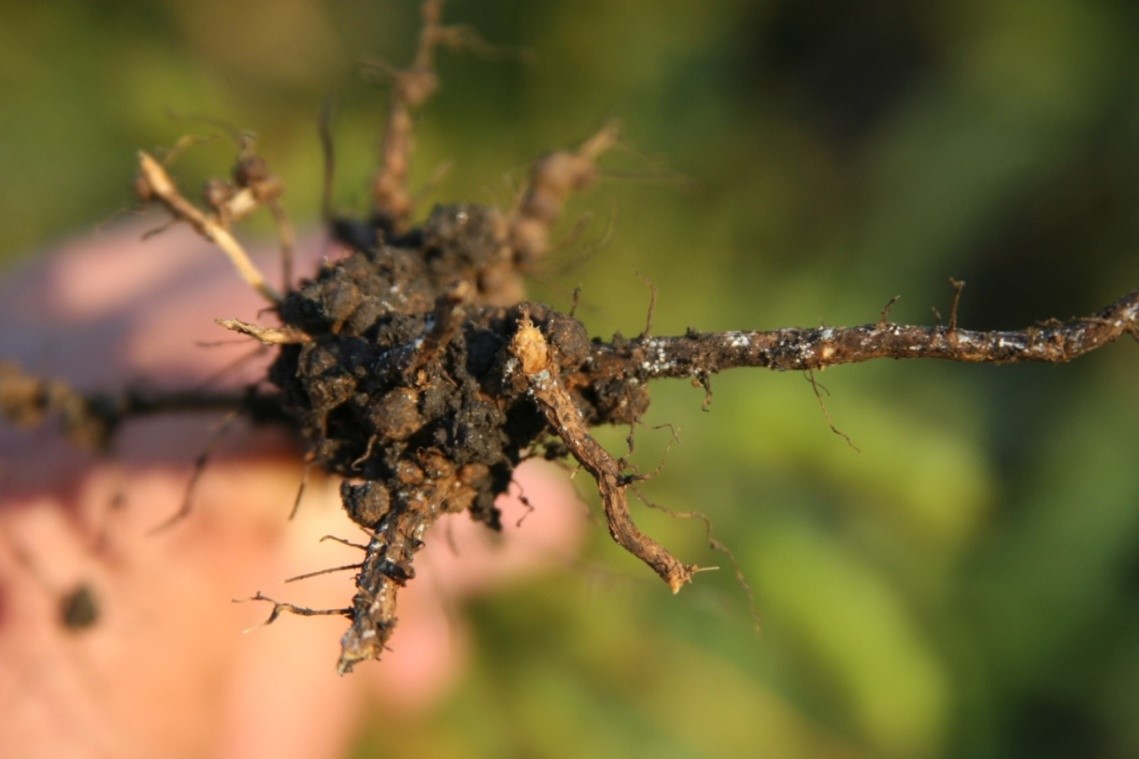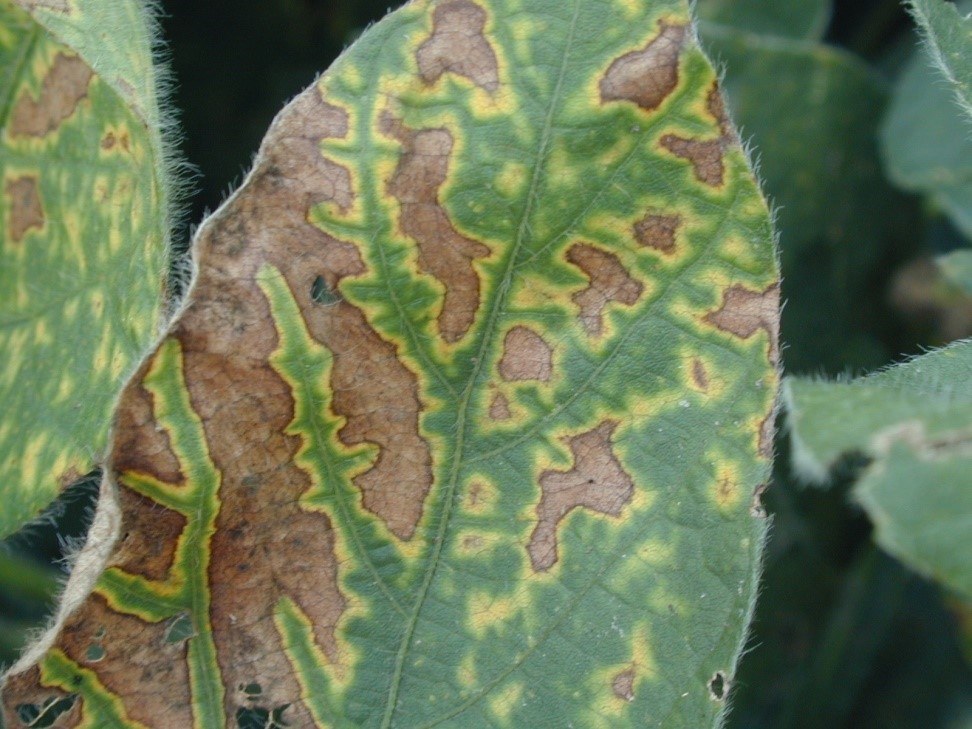Sudden Death Syndrome (SDS) is caused by the fungus, Fusarium virguliforme. Favorable conditions for SDS infection and symptom development can be divided into two distinct periods: infection of soybean roots in the early spring and significant rainfall during flowering.
SDS infects soybeans in the spring under cool, wet soils—conditions that are often associated with early planting. Additionally, if conditions are relatively cool and wet during soybean flowering, the initial infection further develops and advances into the conductive tissues of the roots and lower stem.

blue fungal colonies (Source: GROWMARK, Inc.)
Under moist soils, SDS can produce blue-pigmented fungal colonies on the taproot (Image 1). The fungus then produces a toxin that is translocated into the upper foliage, causing interveinal chlorosis and eventually necrosis (Image 2).
Aboveground symptoms typically appear in patchy distributions after flowering, usually in July or August. The foliar symptoms are not distinct and may be confused with brown stem rot and other foliar diseases. Affected leaflets typically fall off but the petioles remain attached to the stem. The stem pith remains white, but the cortical tissue may develop a faint grayish or tan discoloration, seen in cross-section or longitudinal slices.
Additionally, SDS can result in root rot while brown stem rot does not. SDS can cause premature defoliation and reduced photosynthetic surface area for pod fill, which leads to fewer and smaller seeds. The earlier the appearance of foliar symptoms, the greater the yield impacts.

GROWMARK, Inc.)
Management of SDS is entirely preventive. There are no effective “rescue” treatments once foliar symptoms become visible. Selecting a soybean variety with partial resistance to SDS is an option. Corn-soybean rotations are not effective at managing SDS, because the fungus can survive on corn residue. However, research has shown that extending the rotation with cereal grains such as wheat, may help reduce SDS inoculum.
Additionally, reducing soil compaction, improving soil drainage and maintaining optimal soil fertility can improve plant health and reduce SDS severity. If planting early into fields with a known history of SDS, use a preventive specialized seed treatment fungicide such as ILeVO™ (BASF, fluopyram) or Saltro® (Syngenta, pydiflumetofen), both group 7 SDHI fungicides. Also, take measures to manage and reduce SCN populations in the field, as SCN can increase SDS severity.






 and then
and then